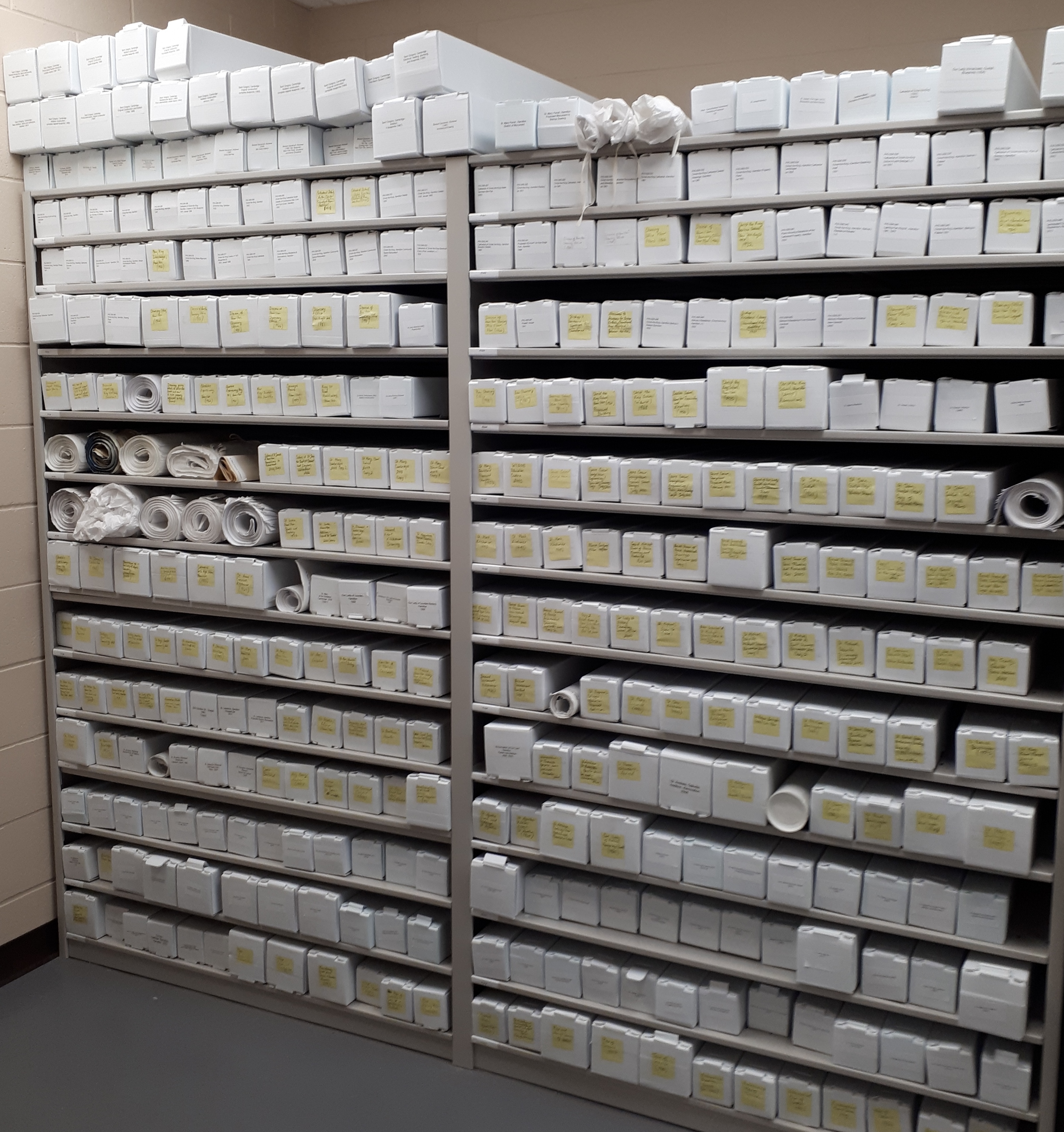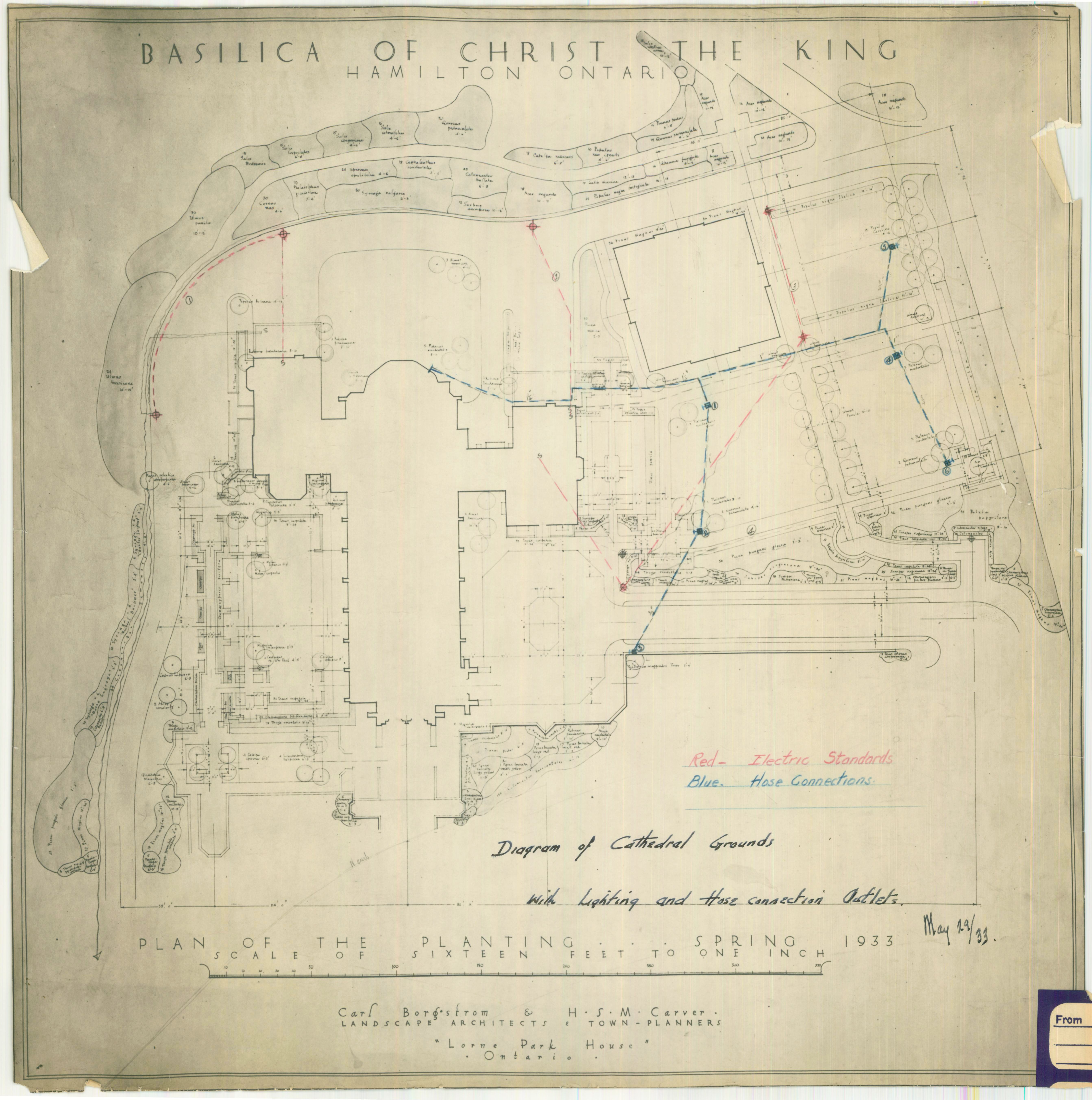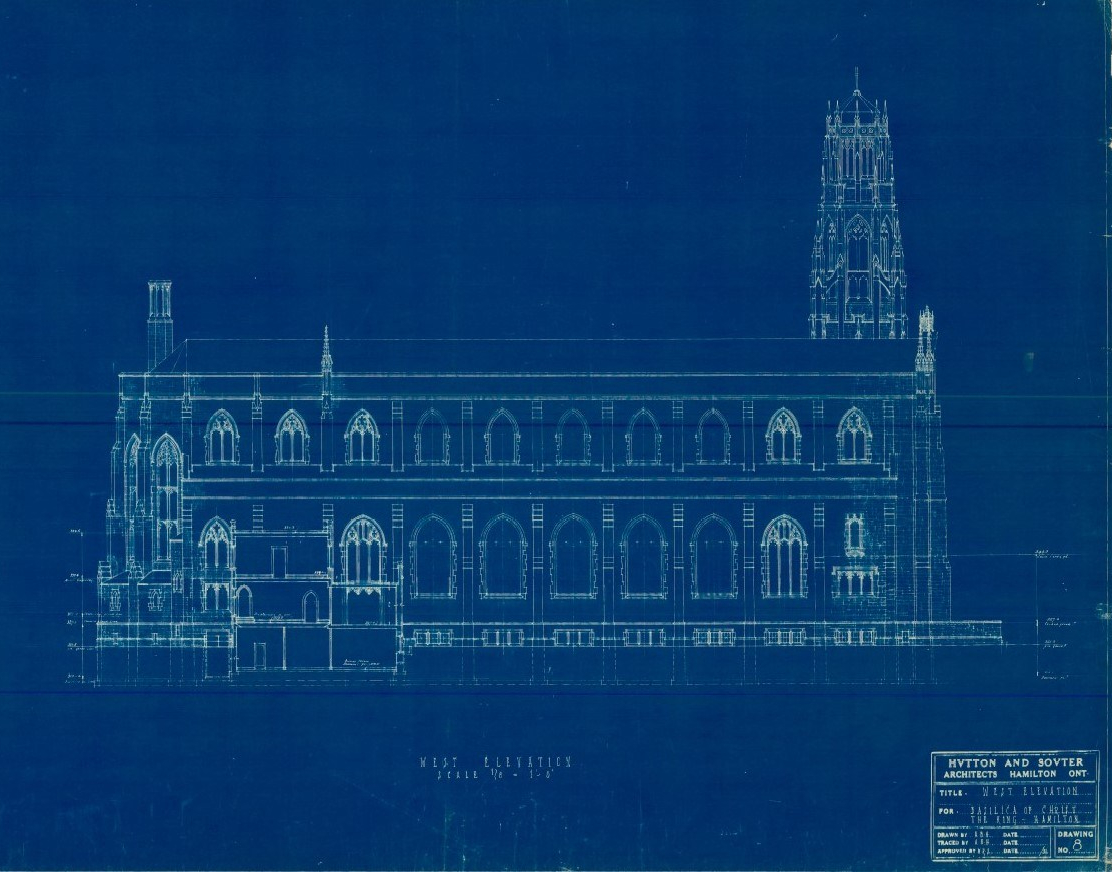Ensuring for the long-term preservation of the documents in our care is a key element in our work at the Bishop Farrell Library & Archives. This includes the safe keeping of an ever expanding collection of architectural drawings. With over 118 parishes in the Diocese of Hamilton, each with its own church and rectory, we have a substantial amount of building plans and drawings to manage! Given that these buildings are still in use and require renovations over time, our architectural drawings are frequently requested by the architects and engineers tasked with their restoration.
In order to balance the preservation of the documents with the need for their access, we embarked on a major digitization project in 2016. In doing so we created a secondary digital collection that allows us to improve access to the records, ensure for the long-term preservation of the drawings, and create a visual landscape to draw on as we work to share the history of the Diocese of Hamilton.

Immaculate Heart of Mary, Stoney Creek, Exterior Renovations, North & East Elevations, Raimondo + Associates Architects Inc., 2004
Our collection of architectural drawings includes blueprints from as early as the 1930s, with the majority of the drawings being from the mid-1900s, and the most recent being for contemporary buildings that are still in the planning stages. We receive new accruals on a regular basis from our Parishes or our Business Office. The majority of the drawings are in relatively good condition and are maintained in a rolled format within specially designed boxes.

Architectural drawings stored at the Bishop Farrell Library & Archives
The project started with a cost and workflow comparison for purchasing a large-format scanner and digitizing in-house versus out-sourcing the work to a vendor specializing in scanning services. For a busy archives with a small staff, it quickly became apparent that out-sourcing the work made the most sense for our needs. We then began an extensive review of best practices for digitization that involved research, site visits, speaking to colleagues, and interviewing vendors. Relying on input from other archives was greatly valuable in this process. For instance, the Digital Outreach Coordinator for the Archives of Ontario shared with us information about the equipment they use (a large format document feed scanner and high-speed cameras) as well as, information about file formats, sizes, and file storage. We also learned that a local municipal museum opts to out-source the scanning of their drawings, despite having access to large format-scanners in their planning department, because it is a faster process than having the work done in-house. These type of behind-the-scene details informed our decisions for making the project successful and manageable.

Before starting any digitization project at the Diocese of Hamilton we conduct an assessment of our needs and goals, reviewing considerations such as those listed above.
With the background research complete we felt confident receiving quotes for the work. We selected Image Advantage Solutions Inc for the digitization. Based on our needs assessment we decided to scan the drawings at 300 dpi to both PDF and TIFF formats. The PDF’s are used as access copies, as they are easy and secure for sharing with architects, engineers, and our diocesan administration. The TIFF’s are used for long term preservation and are essentially a digital back-up for the originals.

A Vidar Select 600, wide format roll-feed scanner was used to digitize the architectural drawings.
The scanner used was a Vidar Select 600e – a wide format roll-feed scanner determined to be acceptable for original materials that are stable and not likely to tear. A carrier sheet (mylar sleeve) was used to protect any sensitive items. Some of these pages were fragile and difficult to scan. One drawing was so large it took an hour and half to scan!

This drawing of the former “West-End Dump”, which was located directly behind the Basilica of Christ the King in Hamilton, was so large it took 1.5 hrs to feed through the scanner!
The end result was the digitization of 323 sets of architectural drawings, representing over 4,000 individual pages scanned into two formats, PDF and TIFF. The files range in size from 15 MB for black and white drawings to 200 MB for colour pages, creating 185 GB of digital files. That would be equivalent to about 40 DVDs worth of material! The files were provided to us on an external hard drive and once received were then transferred to our server, which is backed-up and monitored by an external IT company.

Basilica of Christ the King, Hamilton, Plan of the Planting/Diagram of Cathedral Grounds with Lighting, Carl Borgstrom and H.S.M. Carver Landscape Architects and Town Planners, 1933, (P43.008.012)
The whole project from initial research to the completion of the digitization and the return of the drawings took approximately a year, with four months of dedicated scanning by Image Advantage. We are very grateful to the professionals at Image Advantage who operated the large-format scanners ensuring for the safety of the drawings and the creation of high quality digital images.

Basilica of Christ the King, Hamilton, West Elevation, Hutton and Souter Architects, 1931 (P43.008.002)
The digital copies of the drawings can now be easily shared, many of which are beautiful in their own right, like the early, hand-drawn blueprints of the Cathedral Basilica of Christ the King.
While our collection of architectural drawings is not exhaustive, there are many diocesan buildings not represented, it does provide an overview of the development of the diocese, showing growth and expansion. The architectural drawings provide a visual representation of the landscape of the Diocese of Hamilton!